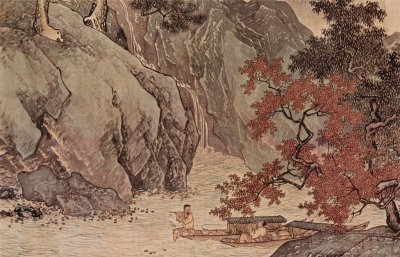Ming Dynasty Culture
 The last of the outstanding dynasties, the Ming Dynasty, was the ruling dynasty in China from the years 1368 to 1644. This last dynasty in China was ruled by ethnic Hans.
The last of the outstanding dynasties, the Ming Dynasty, was the ruling dynasty in China from the years 1368 to 1644. This last dynasty in China was ruled by ethnic Hans.
China’s Flourishing Culture
Under the Ming Dynasty, Chinese culture flourished. The leaders of the Ming Dynasty rediscovered China’s own rich cultural heritage, which had suffered so long under the influence of the Khitan, the Mongols, and the Jurchen.
There was a boom in different cultural aspects, such as poetry, literature, music and Chinese operas. Jiangnan (Chieng-nan), the region south of the Yangzi River, was the center of arts and several traditional artifacts were preserved there. Ming leaders revived a sense of cultural identity and respect for Chinese artifacts and craftsmanship.
Painting
The Ming Dynasty era saw the emergence of three different schools of painting - the Che, which focused on the formal approach of the Sung; the Wu, which appealed to the intelligentsia; and the aim of the Eccentric group was freedom of expression and spontaneity. Narrative painting, with a wider color range and a much complex composition, was quite popular during this era as well.
The famous painters during the Ming era include Ni Zan, Dong Qichang, and the Four Masters of the Ming Dynasty - Qui Ying, Tang Yin, Shen Zhou and Wen Zhengming.
Music and Drama
During the Ming Dynasty, regional operas evolved and soft southern melodies became more popular. The most popular script of Ming dynasty is the Pipa ji, The Story of the Lute written by Gao Ming. Kunshan’ style of music was renewed, and regarded as the most melodious and romantic musical style. During that era, kunku (an ancient type of Chinese opera characterized by long notes and detailed ornamentation) became the popular theatrical form, which was patronized by scholars and the educated elite class. Kunku involved complex acting techniques, delicate singing, and constant dance-like movements.
